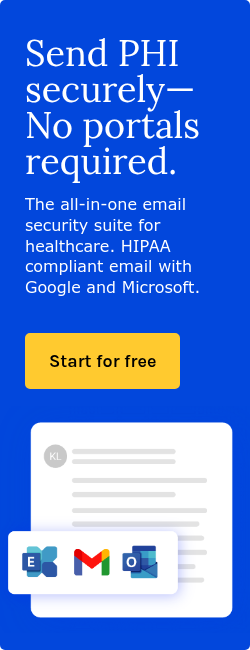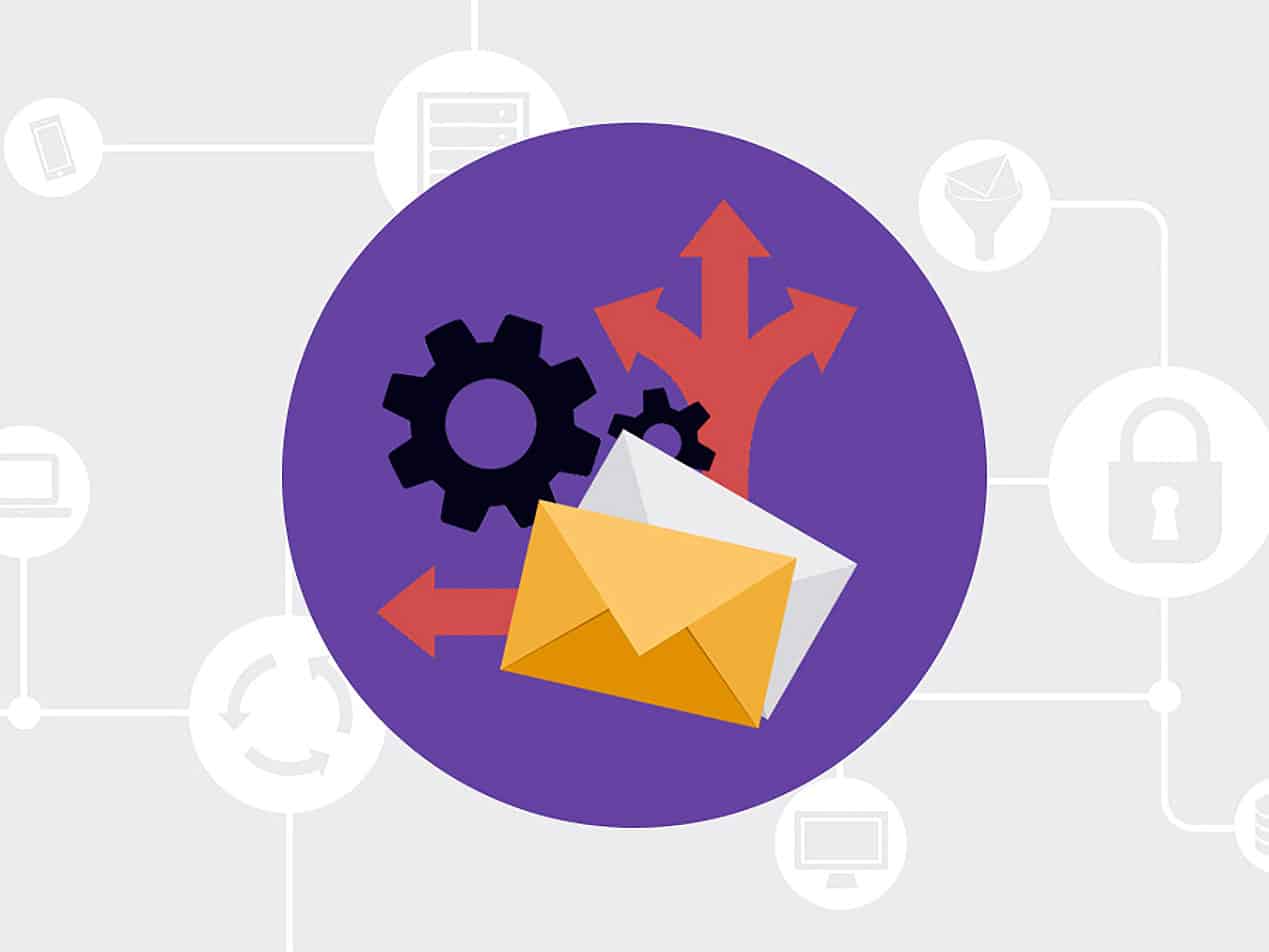
Simple mail transfer protocol (SMTP) relay exploits involve manipulating email protocols to bypass security controls, enabling unauthorized message transmission. ‘Email Spoofing with SMTP Smuggling: How the Shared Email Infrastructures Magnify this Vulnerability’ discusses email smuggling as an attack that “exploits the inconsistent processing of SMTP commands between the sending and receiving MTA servers.”
For instance, phishing attacks, a common email-based threat, rely on social engineering to trick users into divulging credentials or executing malicious actions. These attacks often exploit misconfigured email servers or lax authentication protocols, mirroring the mechanisms of SMTP relay abuses. In healthcare, such exploits could allow attackers to spoof legitimate entities (e.g., hospitals or insurers) to distribute malware or exfiltrate sensitive patient data.
Basics of SMTP and relay
SMTP governs email transmission between servers, while relay refers to routing messages through intermediary servers. In healthcare, SMTP relays are necessary for communication between providers, insurers, and patients. They can also reveal systemic weaknesses in these systems. For example, outdated infrastructure in hospitals often lacks Transport Layer Security (TLS), leaving email traffic unencrypted and vulnerable to interception.
Misconfigured relays may permit unauthorized third parties to send emails through institutional servers, a flaw exploited in phishing campaigns targeting healthcare staff.
The impact of relay exploits on healthcare email systems
SMTP relay exploits directly threaten healthcare by compromising data integrity and patient privacy. Phishing emails, a prevalent attack vector, leverage SMTP vulnerabilities to deliver malicious payloads. A study published in Frontiers in Psychology titled Understanding Phishing Email Processing and Perceived Trustworthiness Through Eye Tracking noted that 22% of participants failed to identify phishing indicators like misspelled sender addresses or urgent requests for financial data, revealing human vulnerabilities compounded by technical flaws.
Successful attacks can lead to ransomware infections, as seen in healthcare supply chain disruptions documented by the FBI, where malware propagated via email crippled systems. Furthermore, SMTP exploits enable business email compromise (BEC) scams, where attackers impersonate administrators to redirect payments or steal intellectual property.
What is SMTP smuggling?
SMTP smuggling is a sophisticated exploitation technique that manipulates the way email servers interpret the SMTP protocol’s end-of-data sequence, allowing attackers to bypass security controls and send spoofed emails.
A University of Illinois Urbana-Champaign study, Email Spoofing with SMTP Smuggling notes, “we present an in-depth study of SMTP smuggling vulnerabilities, supported by empirical measurements of public email services, opensource email software, and email security gateways. More importantly, for the first time, we explored how to perform measurements on private email services ethically, with new methodologies combining user studies, a DKIM side channel, and a non-intrusive testing method. Collectively, we found that 19 public email services, 1,577 private email services, five open-source email software, and one email gateway were still vulnerable to SMTP smuggling (and/or our new variants).”
SMTP smuggling occurs when attackers alter or exploit inconsistencies in this sequence so that the outbound and inbound servers disagree on where the message ends, effectively smuggling additional malicious data or messages within the same transmission. This discrepancy creates a hidden pocket of data that can evade filtering mechanisms such as Sender Policy Framework (SPF), enabling attackers to send emails that appear to originate from trusted domains.
Common vulnerabilities in healthcare
- Medical devices and email servers running unsupported software (e.g., Windows 7) lack patches for known SMTP exploits (Child and Adolescent Mental Health 2022).
- Staff accessing email via unsecured networks increases exposure to man-in-the-middle attacks (Child and Adolescent Mental Health 2022).
- Absence of multi-factor authentication (MFA) allows credential-stuffing attacks, as demonstrated in phishing studies where stolen passwords bypassed single-layer defenses (Child and Adolescent Mental Health 2022).
- Over 30% of healthcare workers in the trials could not distinguish phishing emails from legitimate communications, perpetuating reliance on vulnerable protocols (Frontiers of Psychology 2020).
- Systems required third-party Robotics Processing Applications (RPA) to integrate with electronic health records, introducing unvetted attack surfaces (Child and Adolescent Mental Health 2022).
A technical deep dive
SMTP handshake manipulation
According to a conference paper ‘Neither Snow Nor Rain Nor MITM…An Empirical Analysis of Email Delivery Security” published in the Proceedings of the 2015 Internet Measurement Conference, “STARTTLS is an SMTP extension introduced in 2002 that encapsulates SMTP within a TLS session. In a typical STARTTLS session, a client first negotiates an SMTP connection with the server, after which the client sends the command STARTTLS, which initiates a standard TLS handshake. The client then transmits mail content, attachments, and any associated metadata over this cryptographically protected channel.”
SMTP handshakes establish connections between servers using commands like EHLO and STARTTLS. For example, command injection vulnerabilities in web applications allow attackers to execute arbitrary code by manipulating input fields, a technique adaptable to SMTP contexts. If an attacker intercepts an unencrypted handshake, they could downgrade TLS encryption or inject malicious headers, bypassing security checks.
Command injection and smuggling techniques
Command injection attacks involve embedding malicious code into user inputs. For instance, attackers exploit poorly sanitized fields to execute OS commands like sleep 4, which delays server responses and confirms exploit success. According to a Scientific Reports study ‘Detecting command injection attacks in web applications based on novel deep learning methods’, “On June 12, 2024, Montalbano reported that threat actors exploited a critical PHP command injection vulnerability, allowing remote code execution to target companies and individuals using Windows and Linux systems…On May 14, 2024, Lakshmanan reported that the CACTI Maintenance Center had disclosed several web command injection vulnerabilities… enabling the injection of malicious commands for unauthorized operations.”
In SMTP contexts, similar techniques could manipulate email headers or attachments to trigger malware execution. For example, a phishing email with a crafted Subject: line might exploit parser inconsistencies between gateways and MTAs, smuggling malicious payloads past filters.
Relay authentication bypass
According to Common Weakness Enumeration, “Capture-replay attacks are common and can be difficult to defeat without cryptography. They are a subset of network injection attacks that rely on observing previously-sent valid commands, then changing them slightly if necessary and resending the same commands to the server.”
Authentication bypasses occur when attackers circumvent credential checks. Phishing emails tricked users into revealing passwords, which attackers reused across systems lacking MFA. This mirrors SMTP relay bypasses, where open relays accept unauthorized emails without verifying sender legitimacy. A healthcare-specific example might involve spoofing a hospital’s domain to send fraudulent appointment reminders, leveraging weak SPF/DKIM configurations.
Related: HIPAA Compliant Email: The Definitive Guide (2025 Update)
FAQs
What are MTAs?
Mail Transfer Agents (MTAs) are software programs responsible for sending, receiving, and routing email between servers. They ensure your email is delivered from your outbox to the recipient’s inbox.
What is SPF?
SPF is an email authentication method that helps prevent spammers from sending messages on behalf of your domain. It works by verifying that an email comes from an authorized server listed in your domain’s DNS records.
What are email authentication protocols?
Email authentication protocols like SPF, DKIM, and DMARC help verify that emails are actually from who they say they’re from. They protect against phishing, spoofing, and other email-based attacks.
What are the most common forms of cyberattacks?
The most common cyberattacks include phishing, ransomware, malware, and denial-of-service (DoS) attacks. These tactics are used to steal data, extort money, or disrupt services.
Subscribe to Paubox Weekly
Every Friday we'll bring you the most important news from Paubox. Our aim is to make you smarter, faster.




